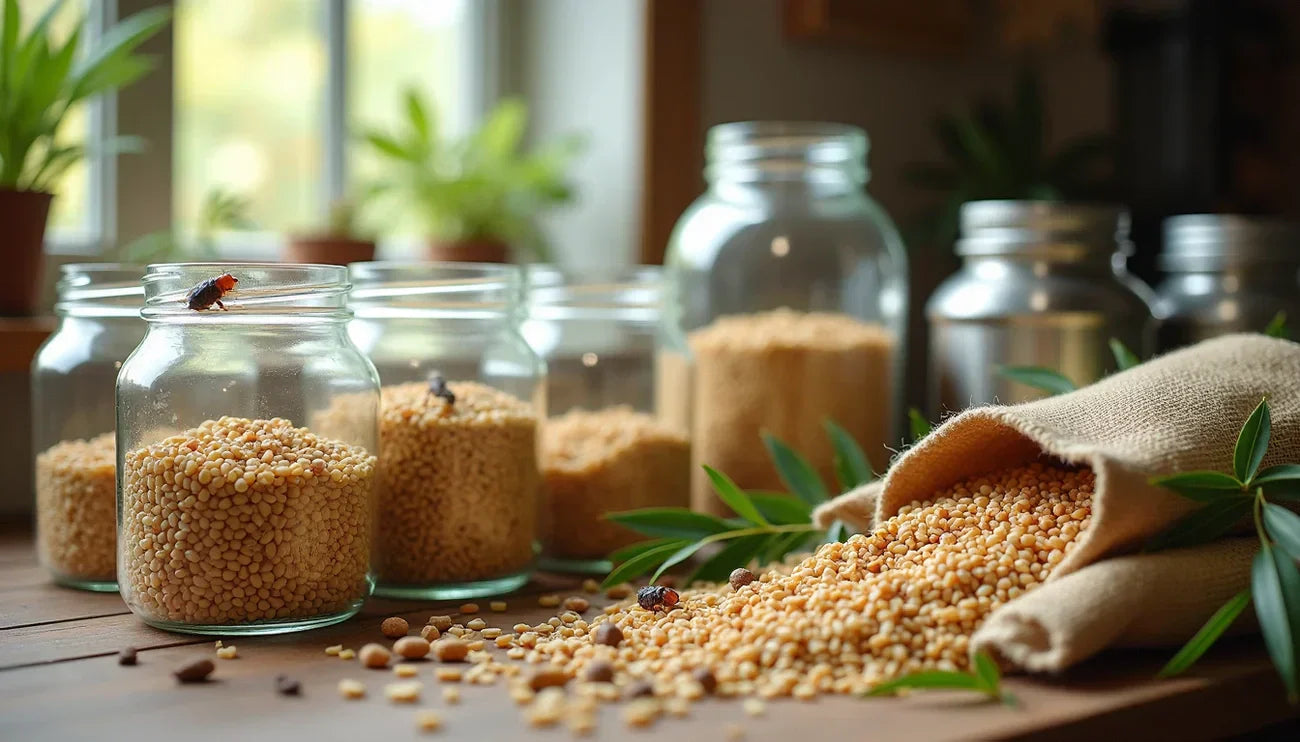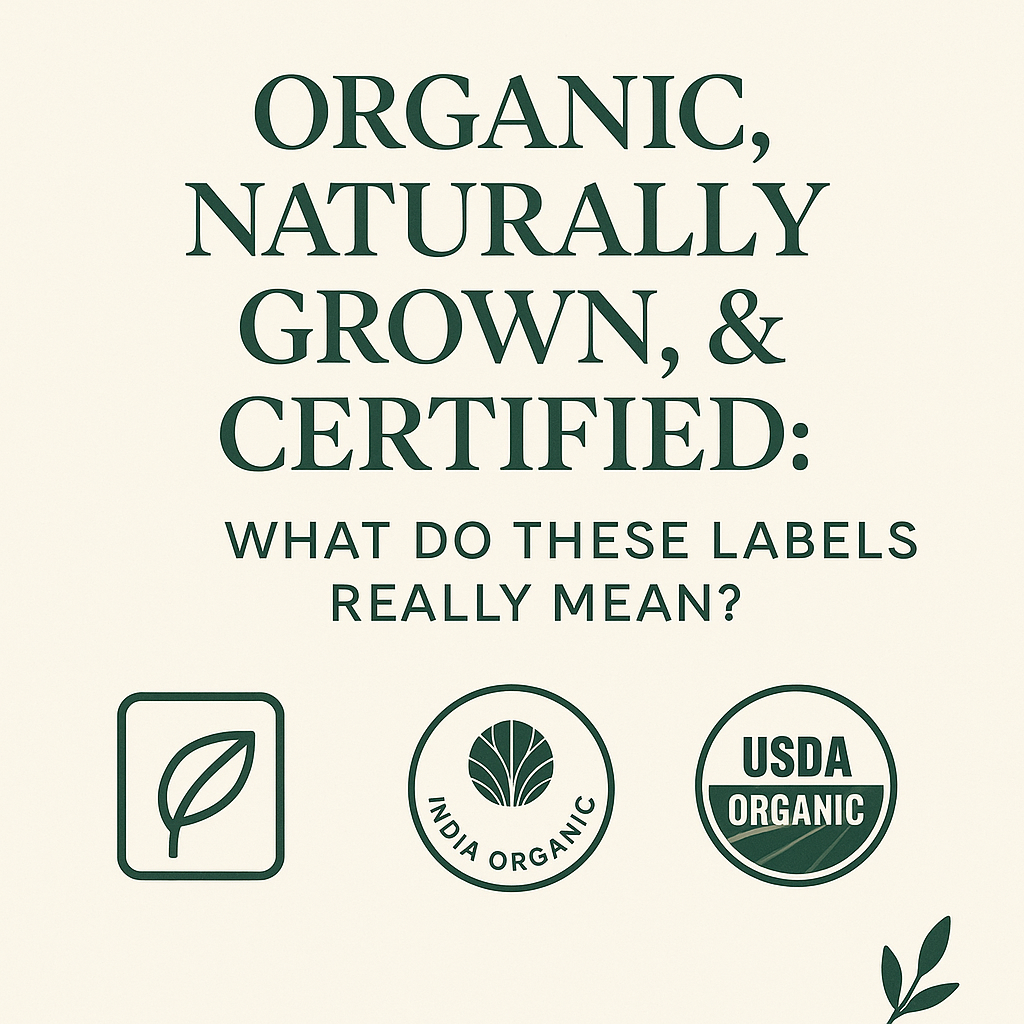Did you know that between one quarter and one third of the world's grain crop is lost each year during storage due to pests? Despite using organic pesticides, finding bugs in your produce is a common experience that might leave you wondering if your food is truly "clean."
In fact, pest management in organic farming has been a challenge since humans first transitioned from hunting and gathering to agriculture. While conventional farms often rely on synthetic chemicals like methyl bromide (banned in the US since 2005 but still used in developing countries like India) , organic farming pest control takes a fundamentally different approach. As someone who values both clean food and sustainability, I've learned that organic agriculture emphasizes holistic methods that sustain soil health, ecosystems, and human wellbeing.
We'll explore why you still see bugs in organic produce, compare organic and conventional pest control methods, and share practical tips for keeping unwanted critters away from your organic staples at home.
Why Bugs Are Still Found in Organic Produce
The presence of bugs in organic produce might seem contradictory at first glance. However, this phenomenon stems from several interconnected factors that distinguish organic farming pest control from conventional approaches.
Temperature plays a crucial role in insect development and reproduction. Most stored product pests require temperatures above 60°F to reach damaging populations, with some needing temperatures above 70°F to thrive. When temperatures drop to 50-55°F, many insects become inactive rather than die. This explains why seasonal temperature fluctuations can lead to sudden pest appearances.
Humidity further complicates pest management in organic farming. Studies show that higher humidity levels significantly increase insect reproductive capacity, with egg hatchability reaching 86% at 75% relative humidity.
Moreover, initial infestations often begin in the field before harvest. Several storage pests such as bean beetles and grain borers infest crops when they're almost dry. These hitchhiking pests then enter storage facilities alongside harvested produce.
Organic vs. Conventional Pest Control Methods
The fundamental distinction between organic and conventional pest control approaches lies in their philosophy. Conventional farming relies primarily on synthetic chemical pesticides to fight pests, whereas organic farming employs a hierarchical strategy prioritizing prevention. Organic farmers follow strict regulatory guidelines requiring them to implement preventative measures first. The National Organic Program requires an Organic System Plan detailing all inputs and practices. These include crop rotation, sanitation measures, and selecting pest-resistant varieties. Only when these preventative practices prove insufficient can farmers use approved organic pesticides.
Conventional pesticides, although cost-effective, have raised concerns about their environmental impact. Chemical pesticides pollute air and water while killing beneficial organisms alongside pests. Studies show conventional agricultural soils contain significantly more pesticide residues (11-17 different compounds) than organic soils (3-11 compounds).
Organic pesticides typically include substances like neem oil, pyrethrin, diatomaceous earth, and biological agents like Bacillus thuringiensis. These materials generally break down faster in the environment but may require more frequent applications to achieve control.
Although organic pesticides are often perceived as safer, toxicity depends on the specific compound rather than its origin. Some organic pesticides carry the DANGER signal word, while certain synthetic pesticides only require a CAUTION label. Essentially, "organic" doesn't automatically mean "safe," just as "synthetic" doesn't automatically mean "dangerous".
How to Keep Bugs Away from Organic Staples at Home
Keeping unwanted visitors away from your organic staples begins with proper inspection at the store. Carefully examine packaging for tears, holes, or signs of pests before bringing items home.
Sun drying offers an effective first defense against bugs. Spread your grains, pulses, or nuts thinly on a cotton cloth under direct sunlight for several hours—this kills adult insects and renders eggs unhatchable.
Natural pest repellents work wonderfully without leaving harmful residues. Adding neem leaves, bay leaves, cloves, or red chillies to your storage containers creates a natural barrier against pests. These ingredients contain oils that repel insects without affecting food quality.
Airtight containers are absolutely essential. Transfer all dry goods into glass, metal, or heavy plastic containers with secure seals immediately after purchase or sun drying.
Maintain a regular cleaning routine for your pantry:
· Promptly clean up spills and crumbs
· Vacuum or sweep corners and cracks thoroughly
· Wipe shelves and containers regularly
· Discard expired items immediately
For maximum protection, consider freezing items for four days before storage—this effectively eliminates any remaining eggs or insects.
Remember, consistent maintenance is key. Perform a deep pantry cleaning quarterly, removing everything and disinfecting all surfaces.
Conclusion
Finding bugs in your organic produce doesn't mean it's unclean or that organic pesticides have failed. Rather, this occurrence represents the natural balance that organic farming strives to maintain.
The presence of occasional bugs actually signals authenticity in organic produce.
Therefore, next time you spot a tiny visitor in your organic lentils, remember it represents a food system that prioritizes long-term soil health and ecosystem sustainability. This surprising truth about organic pesticides—that they're part of a holistic approach rather than a silver bullet—might change how you view those uninvited guests in your kitchen cabinet.
References
[1] - https://extension.psu.edu/management-of-stored-grain-pests-in-organic-systems/
[2] - https://pmc.ncbi.nlm.nih.gov/articles/PMC3569590/
[3] - https://infonet-biovision.org/plant_pests/storage-pests
[4] - https://www.ams.usda.gov/sites/default/files/media/Organic Pest Management_FINAL.pdf
[5] - https://rodaleinstitute.org/why-organic/organic-farming-practices/pest-management/
[6] - https://www.sciencedirect.com/science/article/pii/S0269749122005048
[8] - https://www.farmstandapp.com/63643/7-ways-organic-pest-control-differs-from-conventional/
[9] - https://gscpestmanagement.com/organic-vs-conventional-pesticides/
[10] - https://www.pubs.ext.vt.edu/ENTO/ENTO-384/ENTO-384.html
[11] - https://extension.umn.edu/product-and-houseplant-pests/pantry-pests-insects-found-stored-food
[12] - https://extension.usu.edu/preserve-the-harvest/research/drying-methods
[13] - https://greytothegreen.com/product/safe-insect-repellent-for-food-storage/
[15] - https://ucanr.edu/blog/fresno-gardening-green/article/take-precautions-prevent-pantry-pests
[16] -https://www.environmentalpestcontrol.ca/blog/guide-to-pest-proofing-your-pantry






